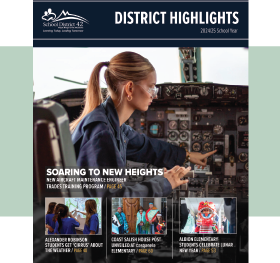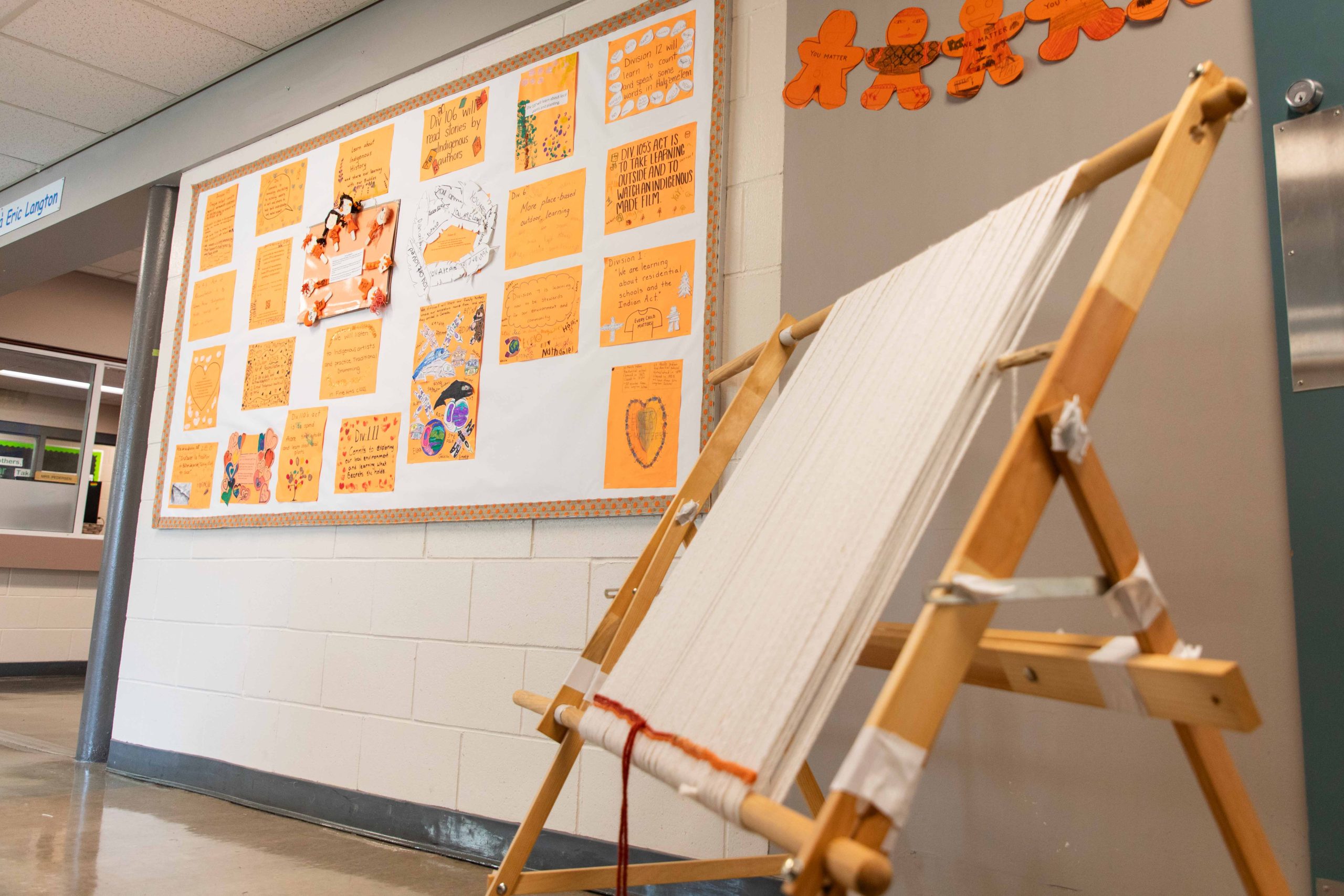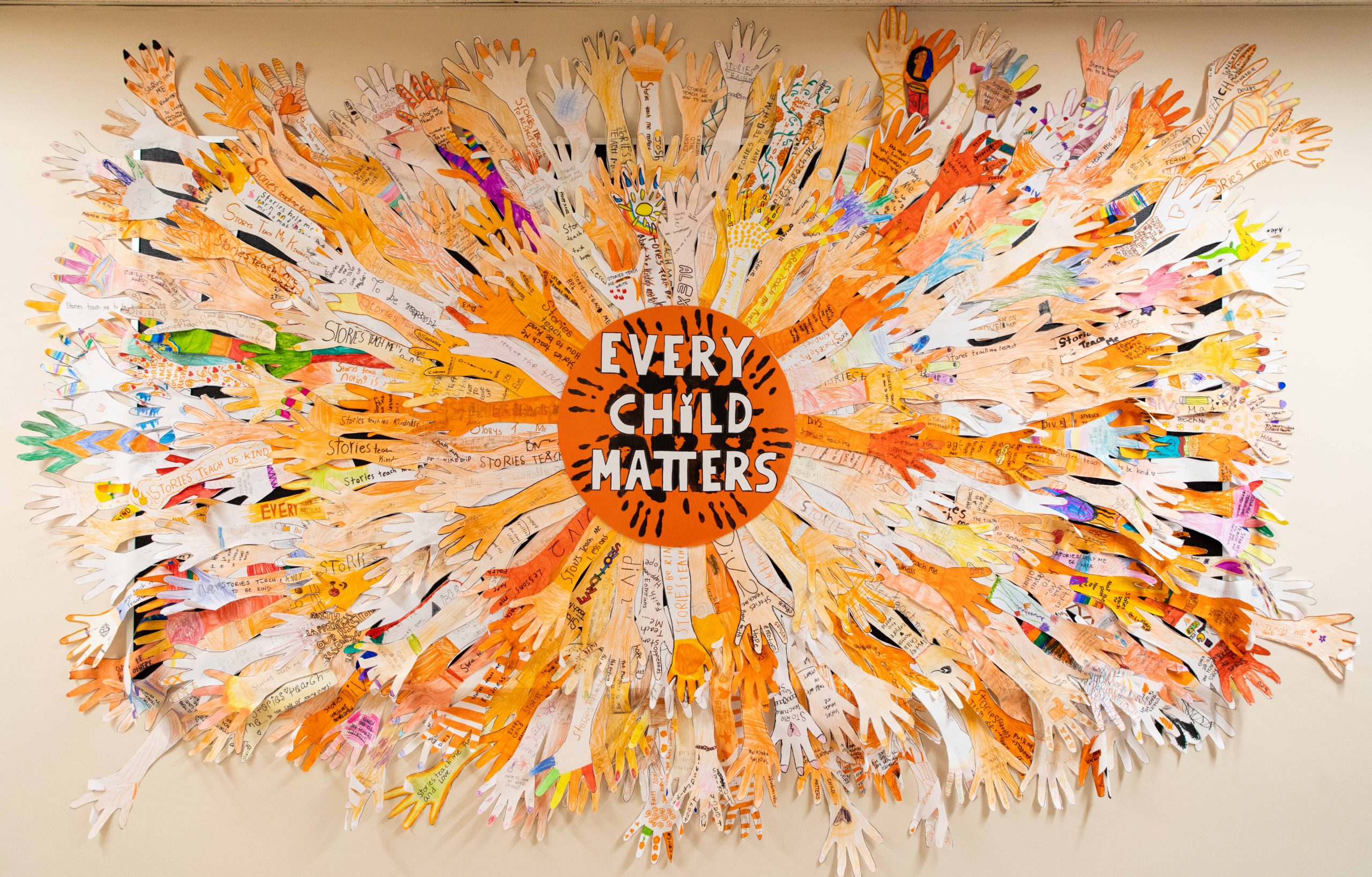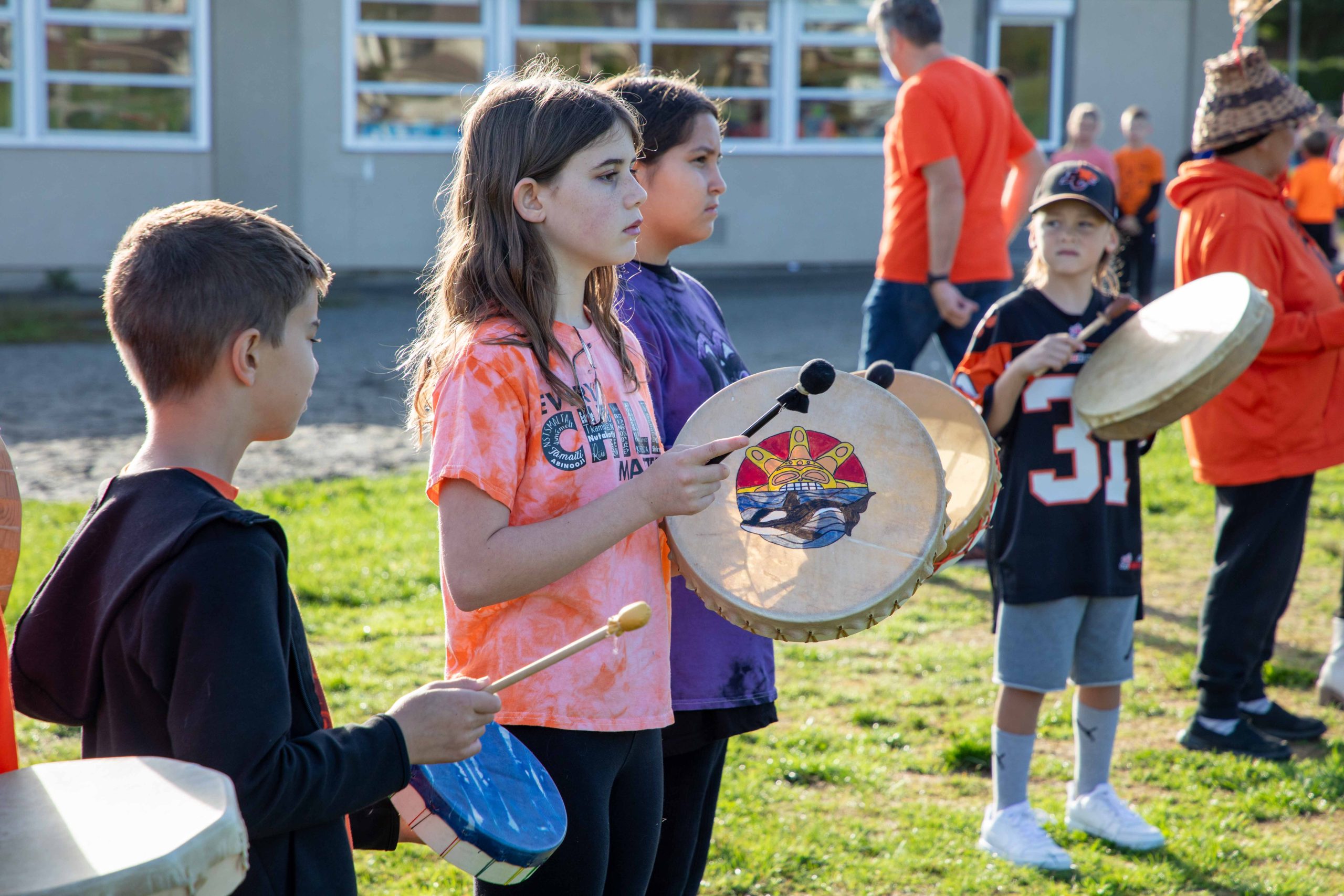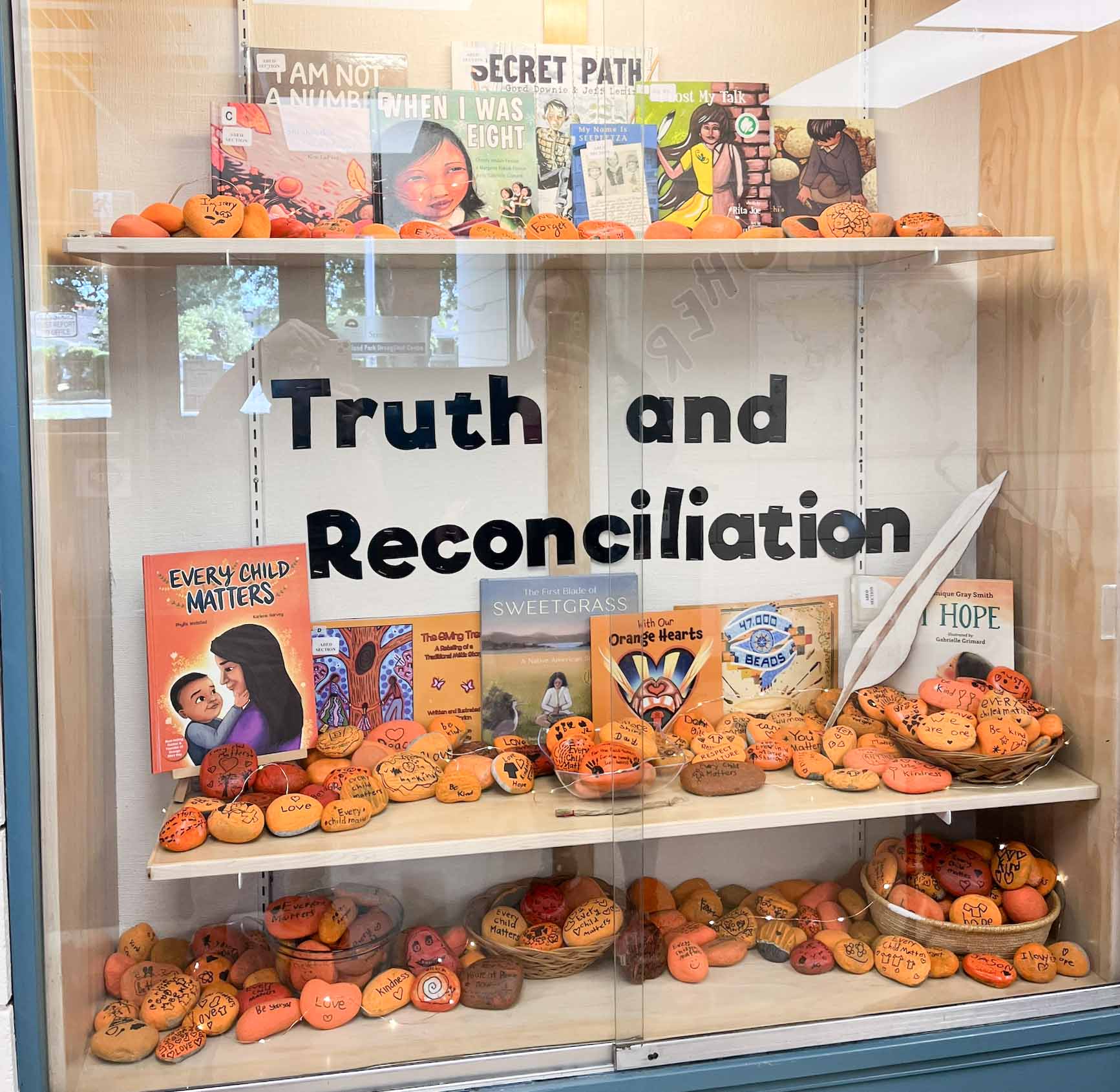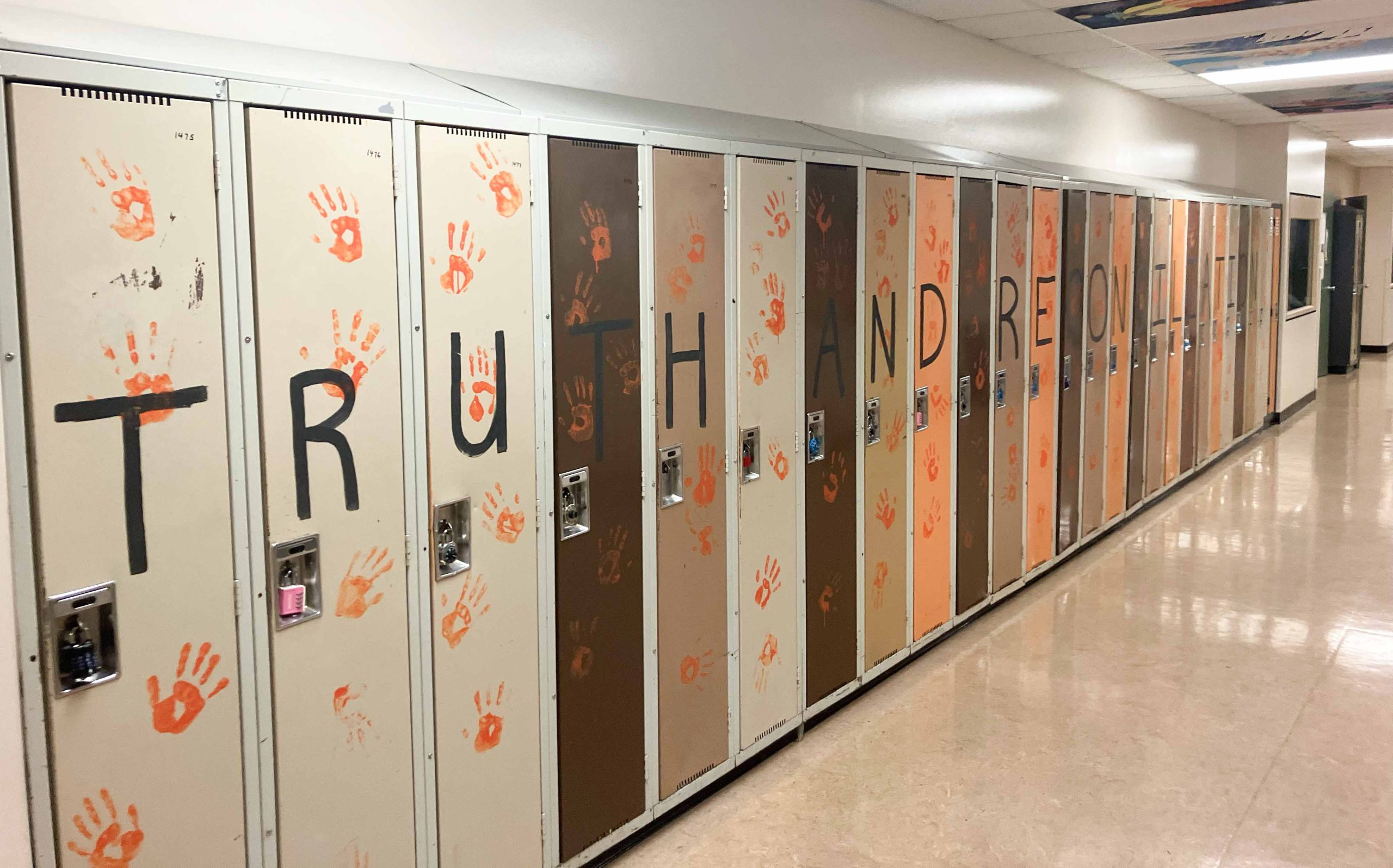During Truth and Reconciliation Week, students and staff across the Maple Ridge – Pitt Meadows School District spent time learning about the legacy of residential schools and the histories of First Nations, Inuit, and Métis peoples. They learned about the many children who never returned home, the survivors, and all the families impacted by residential schools.
At the elementary level, students took part in drumming circles, visits from Elders, and meaningful art projects. Secondary students learned about the intergenerational impacts of residential schools, came up with art displays to reflect their learning, and participated in school-wide events.
Each class at Eric Langton Elementary chose an act of reconciliation to make a commitment to, and then wrote it down on a piece of paper as part of a year-long project. Once a class follows through on their commitment, they will take a string and weave it on the school’s loom to represent acts of reconciliation.
In a school-wide assembly at Glenwood Elementary, Grade 6/7 students made a presentation about the Truth and Reconciliation Commission’s Calls to Action. They shared examples of what Glenwood Calls to Action could look like, such as personalized land acknowledgements and offering a larger selection of Indigenous foods for lunch.
Every student at Davie Jones Elementary coloured a piece of paper in the shape of a hand and wrote down what they learned from the stories they heard and read during the week by Indigenous authors. Students wrote down words like “hope,” “kindness,” and “history.” The artwork was then put together to form a bulletin board display with the words, “Every Child Matters,” in the centre.
Fine arts teacher Jon Pretty says it’s meant to be a visual representation of the school community actively working towards truth and reconciliation.
“This is a project where every student can see their own contribution to their school community as a whole and can point to their work amongst their friends and community,” Pretty explained. “This extends beyond the school walls as well, where students will share this mural with family and create conversations around the significance and context of Orange Shirt Day.”
Alouette Elementary held a drumming circle on Orange Shirt Day, with Katzie First Nation Elder Coleen Pierre and Mavis Pierre in attendance. The entire school gathered outside, forming a large circle. Elder Coleen Pierre spoke to the students about the significance of wearing orange, thanked them for taking part, and then read aloud a poem she wrote in honour of residential school survivors. After that, Mavis Pierre, along with some students, performed a traditional song.
Students and staff at Maple Ridge Elementary participated in a friendship circle to listen and learn, and provide a physical representation of their commitment to reconciliation.
Alexander Robinson Elementary spent all of Orange Shirt Day learning about truth and reconciliation. Students began the day with an assembly, then went from class to class to participate in different stations and activities. They ended the day with another assembly to enjoy some Bannock and discuss what they learned.
At an assembly for the National Day for Truth and Reconciliation at Edith McDermott Elementary, students and staff were joined by two Katzie singers who performed a welcome song. They then heard from student presenters about the meaning of truth and reconciliation, and finished off the assembly by listening to Blackbird by the Beatles, sung in hən̓q̓əmin̓əm̓.
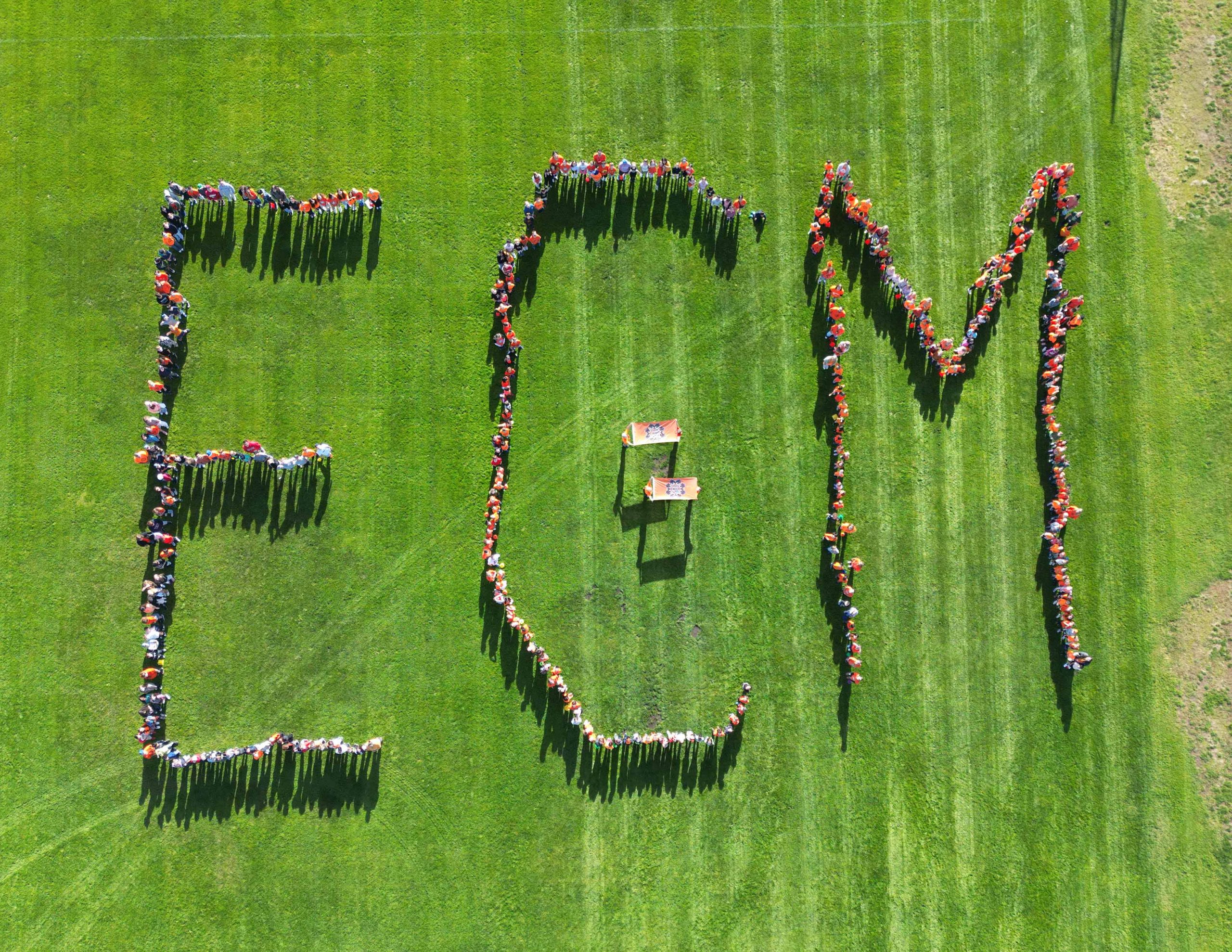
Edith McDermott Elementary formed the letters “ECM” on the field for “Every Child Matters.” (Ron Comeau/Photo Expressions)
Maple Ridge Secondary held an honour circle to bring together the school community for truth and reconciliation. After reading a personal story from Indigenous Education support worker Sherri Thompson (Britton) about the impact of residential schools on her family, all staff and students gathered outside the school. They circled the building and heard from the school’s Circle of Indigenous Youth and Allies about the significance of Orange Shirt Day, honouring the truths of the past, and how to move towards reconciliation.
Every student at Highland Park Elementary painted a rock to represent the children who never made it home from residential school. Students brought their rocks to an assembly where they sat in a circle and sang My Ancestors, a song gifted to the school by Katzie youth Lilly Teare Cunningham and her sisters. They then collected all the rocks and created a display.
At Pitt Meadows Secondary, students in Ms. Carlos’ social justice class created a display of orange handprints across school lockers as part of a campaign to bring awareness to truth and reconciliation and get other students thinking about what it means.
The SD42 Indigenous Education department celebrated its name change with Elder Ed Pierre and Elder Yvonne Pierre on September 23, 2024. Following a suggestion from Indigenous Education support worker Robbi-Lynn Lamour, the department staff wore orange shirts and took a photo to mark the milestone and honour the work that went into the name change.
“In the spirit of truth and reconciliation, the department celebrates the brilliance of the department staff’s gifts and talents they bring to schools every day,” said Kathleen Anderson, district principal of Indigenous Education.

